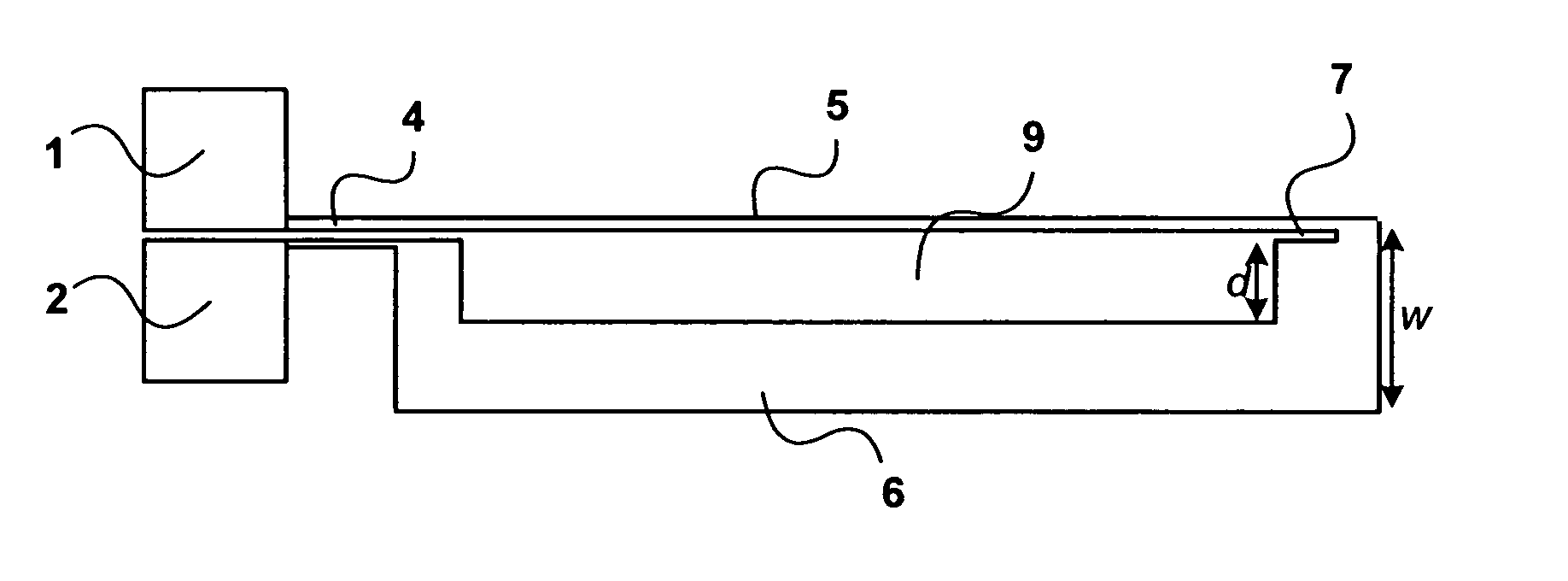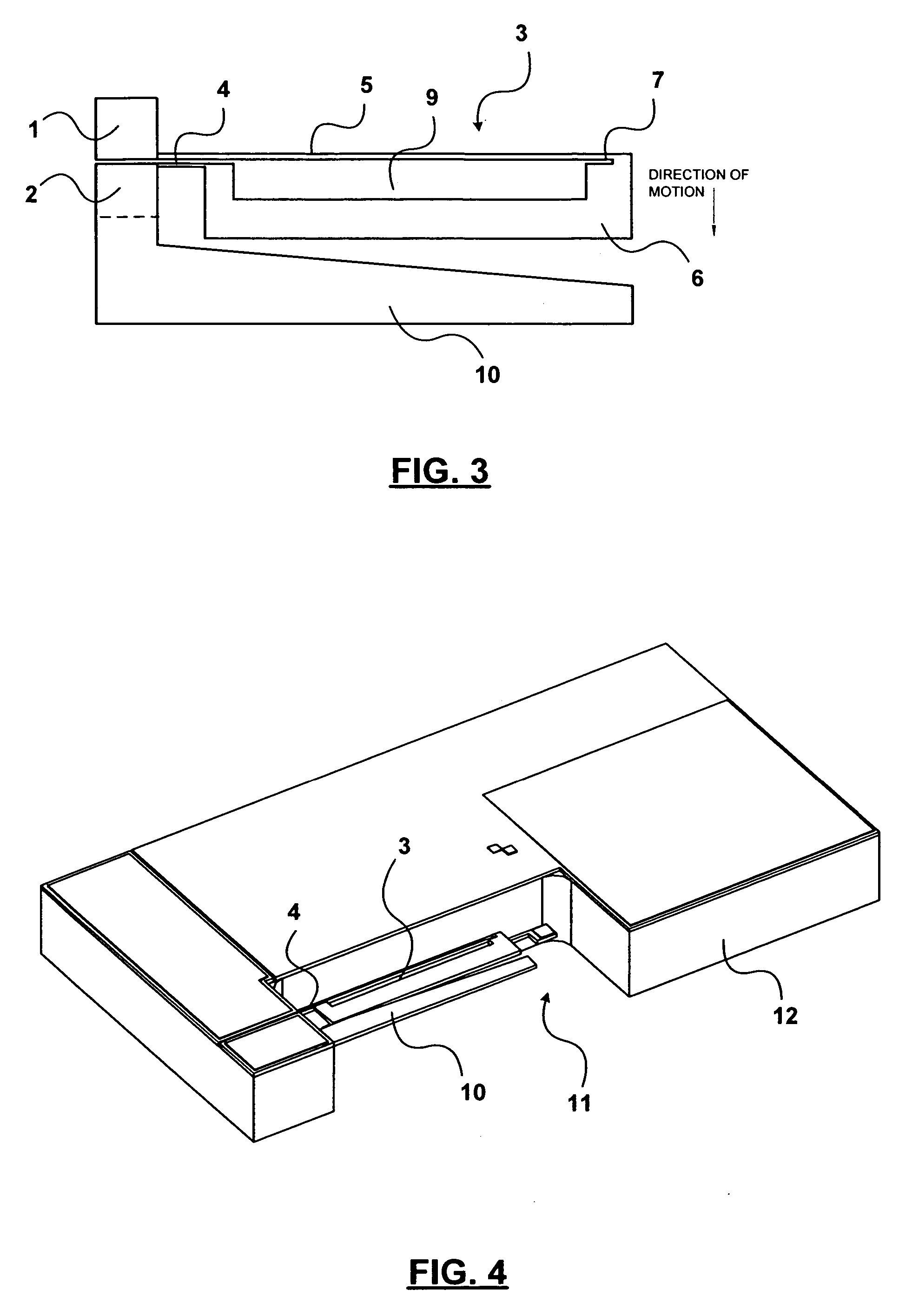Thermal actuator
a technology of actuators and actuators, applied in the field of microelectromechanical systems, can solve the problems of reducing the amount of deflection, altering the thermal gradient of the air surrounding the device, and the separation of the two arms, so as to improve the efficiency of the actuator, maintain the stiffness, and reduce the heat transfer through the air
- Summary
- Abstract
- Description
- Claims
- Application Information
AI Technical Summary
Benefits of technology
Problems solved by technology
Method used
Image
Examples
Embodiment Construction
[0018]The standard asymmetric style thermal actuator commonly used in the MEMS community and schematically shown in FIG. 1 comprises a pair of stationary bond pads 1, 2 and an actuator element 3 connected to the bond pads by a narrow flexure portion 4.
[0019]The actuator element 3, which is formed from a common layer of silicon on an insulator substrate, comprises a long narrow hot arm 5 extending alongside and spaced from a wider cold arm 6 by a small gap 7. The actuator element 3 is formed from a single layer of silicon using MEMS technology.
[0020]The actuator element 3 is in the form of a wire formed in a generally U-shape configuration. A current driven through the actuator element between the bond pads 1, 2, from which the arms 5, 6 extend, causes one side of the device to heat and expand more than the other due to the different resistance of the two arms. This difference in thermal expansion sets up an internal mechanical moment and causes the actuator element 3 to deflect towa...
PUM
 Login to View More
Login to View More Abstract
Description
Claims
Application Information
 Login to View More
Login to View More - R&D
- Intellectual Property
- Life Sciences
- Materials
- Tech Scout
- Unparalleled Data Quality
- Higher Quality Content
- 60% Fewer Hallucinations
Browse by: Latest US Patents, China's latest patents, Technical Efficacy Thesaurus, Application Domain, Technology Topic, Popular Technical Reports.
© 2025 PatSnap. All rights reserved.Legal|Privacy policy|Modern Slavery Act Transparency Statement|Sitemap|About US| Contact US: help@patsnap.com



